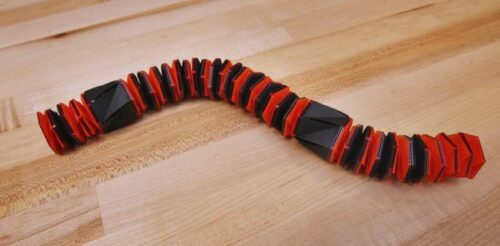This robot has enhanced flexibility and precision control, capable of navigating intricate mazes without losing its pliable nature.

Researchers from Princeton and North Carolina State University have merged traditional paper-folding techniques with advanced materials science to develop a new type of soft robot. This robot demonstrates enhanced flexibility and manoeuvrability, capable of navigating through complex mazes without compromising its inherent softness. The unique design integrates the steering system within the robot’s structure itself, allowing for more precise control while maintaining the robot’s pliable nature, as explained by Tuo Zhao, a postdoctoral researcher at Princeton.
The developmental work was carried out in specialized laboratories at Princeton’s Department of Civil and Environmental Engineering and the Princeton Materials Institute, as well as at North Carolina State University. The researchers employed modular, cylindrical segments shaped in an origami pattern known as Kresling, enabling the robot to perform complex movements and directional changes. The segments are equipped with electrothermal actuators and silver nanowire heaters, facilitating precise movement control through thermal expansion.
Each cylindrical segment of the robot can function independently or connect to form a longer assembly, allowing for versatile applications such as cargo transport and complex assembly tasks. The segments are designed to communicate and synchronize with one another, capable of forming a cohesive unit or operating as a swarm. This modular approach not only enhances the robot’s operational flexibility but also its potential for self-repair and adaptation, as segments can be easily added or replaced.
Technological Innovations and Challenges
The core lies in the robot’s ability to alter its shape through controlled bending and folding, driven by the unique properties of liquid crystal elastomer and polyimide combined into thin control strips. These strips react differently to heat, which is applied through an electrical current running through a silver nanowire network. This setup allows for the precise manipulation of the robot’s movement and orientation. Despite these advancements, the current model of the robot faces limitations in speed, which the team aims to overcome in future iterations.
The integration of origami principles and modern robotics through this research opens up numerous possibilities for the development of soft robots that can dynamically grow, heal, and adapt to their environments. The researchers anticipate further enhancements in the robot’s speed and steering capabilities, alongside exploring various shapes and structural patterns to optimize performance. This technology holds significant promise for applications ranging from medical devices to construction and aerospace, where flexibility and adaptability are paramount.






